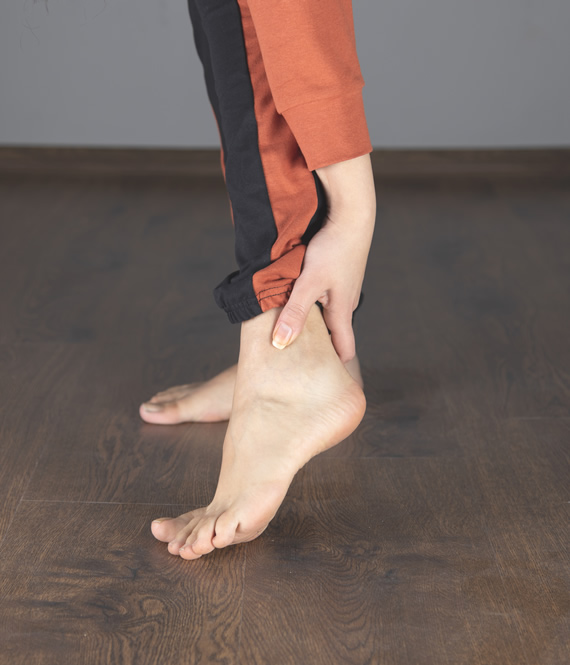
Understanding Spinal Health: A Snapshot of Minimally Invasive Solutions
We recommend helpful products in our articles. Read our full disclosure here. The content on this website is not intended to be a substitute for professional advice, diagnosis, or treatment.
If you have been putting off your spine surgery, you are not alone.
Most patients fear such invasive interventions, ultimately leading to worsening spine health, increased pain, and a dependency on medications for relief.
But there’s an alternative that’s changing the game: minimally invasive spine surgery.
This approach minimizes risk, reduces recovery time, and opens the door to a life free of chronic back issues.
Let’s dive into how this innovative surgical method is offering hope to those seeking a way out of pain without the daunting prospect of traditional surgery.
Decoding Minimally Invasive Spine Surgery
Minimally invasive spine surgery represents a significant advancement in treating spinal disorders and injuries.
Unlike traditional surgery, this method involves smaller incisions, less tissue disruption, and a quicker recovery period.
It is performed by making small incisions, through which specialized instruments are maneuvered, with the assistance of imaging guidance (e.g.: X-rays and viewing instruments).
This allows the surgeon to access and treat the affected area of the spine with precision and minimal disruption to surrounding tissues.
While highly advanced, minimally invasive spine surgery is still a new entry in the field of treatments for spine conditions.
Because of this, it is crucial to find healthcare providers expert in this cutting-edge technique, such as the team at NU-Spine.
Putting your spine in the hand of specialists in the sector can further reduce risks and boost health outcomes.
Traditional Surgery vs. The Minimally Invasive Approach
When comparing traditional surgery to the minimally invasive approach, several key differences stand out:
- Incision size: Traditional surgery requires larger incisions, while minimally invasive procedures use smaller, less invasive cuts.
- Recovery time: Patients typically experience a quicker recovery with minimally invasive surgery, returning to daily activities sooner – some even within 6 weeks!
- Tissue damage: Less tissue is disrupted during minimally invasive procedures, promoting faster healing.
- Risk of infection: Smaller incisions reduce the risk of post-surgical infections.
These distinctions underline why many are now opting for the minimally invasive approach to spinal surgery.
Different Types of Minimally Invasive Spine Procedures
Minimally invasive spine procedures are revolutionizing the standards of treatment for spinal conditions.
They can be used to address a range of spine disorders, from alleviating lower back pain, addressing degenerative changes, correcting malformations, and repairing injuries.
Some of the most common minimally invasive spine surgery procedures employed today include:
- Microdiscectomy for herniated lumbar discs.
- Laminectomy, to relieve pressure on spinal nerves.
- Spinal fusion to stabilize joints and reduce pain.
Each method is tailored to treat specific conditions, enhancing the patient’s recovery journey and overall quality of life.
Why Opt for Minimally Invasive Spine Surgery?
Although minimally invasive spine surgery may not be the best treatment option for all disorders of the spine, this alternative is highly versatile, and offers non-neglectable benefits – for the patient and healthcare system alike!
Some of the advantages of opting for minimally invasive operations include:
- Quicker recovery times.
While traditional surgery recovery can span months, minimally invasive techniques can reduce this to weeks.
This speedier recovery allows patients to return to their daily activities and work much sooner, minimizing the disruption to their lives.
- Fewer risks and complications.
According to studies, patients undergoing minimally invasive surgery experienced shorter hospital stays, a more rapid return to work, and less estimated blood loss.
The smaller incision involved and the ad hoc instruments used also lower the risk of damage to nearby components of the spine.
This can prevent disability further down the road and reduces the risk of complications like Failed Back Surgery Syndrome and infections.
- A route to long-term spinal health.
Fear of invasive surgeries often drives patients away from this option and leads them to chronic medication use, which can cause dependency and other severe side effects.
Minimally invasive spine surgery, however, offers a less daunting alternative with fewer risks, encouraging patients to address the root cause of their spinal issues – an efficient, long-lasting solution to regain your spine health.
The Future of Spinal Health Lies in Minimally Invasive Techniques
If you have been putting off an effective treatment to your spine condition for the fear of undergoing surgery, be reassured that less invasive and less risky options exist.
The journey toward resolving chronic back pain and spine-related ailments no longer necessitates the daunting path of traditional surgery.
This cutting-edge technique not only alleviates the physical burden of spinal disorders but also addresses the psychological barriers that often deter individuals from seeking necessary care.
Be sure to partner with experts in health the sector to optimize your health outcomes.
"We love to research problems, examine studies, analyze solutions, and share with you ideas that make life healthier. You can learn about us and our editorial standards here. Have suggestions or feedback to share? Send us a message!."













Leave a Comment